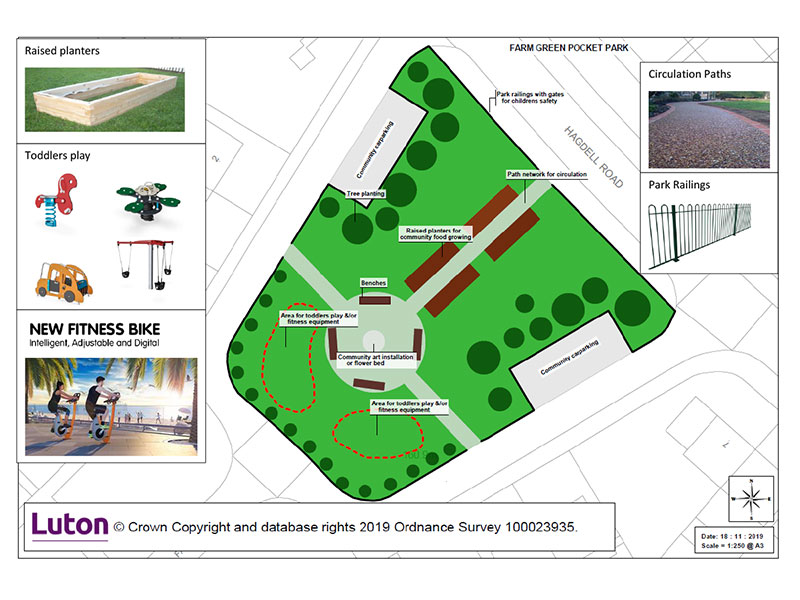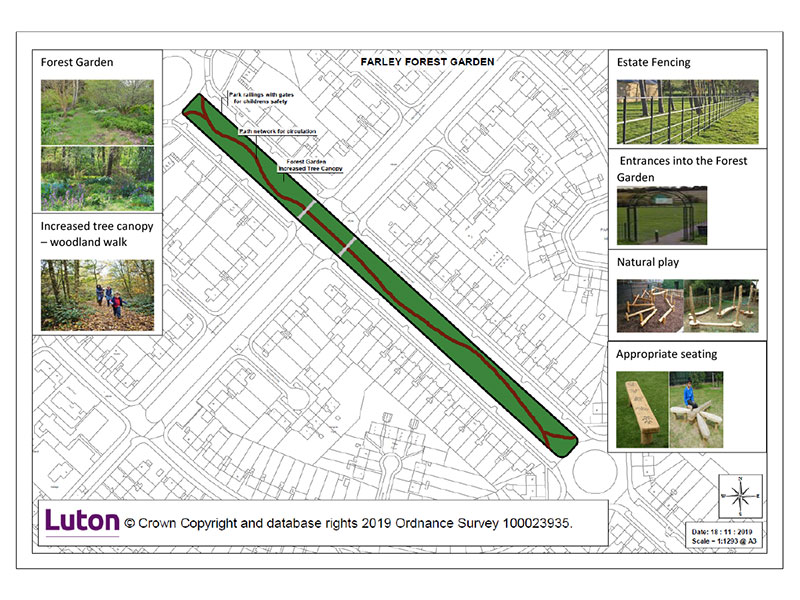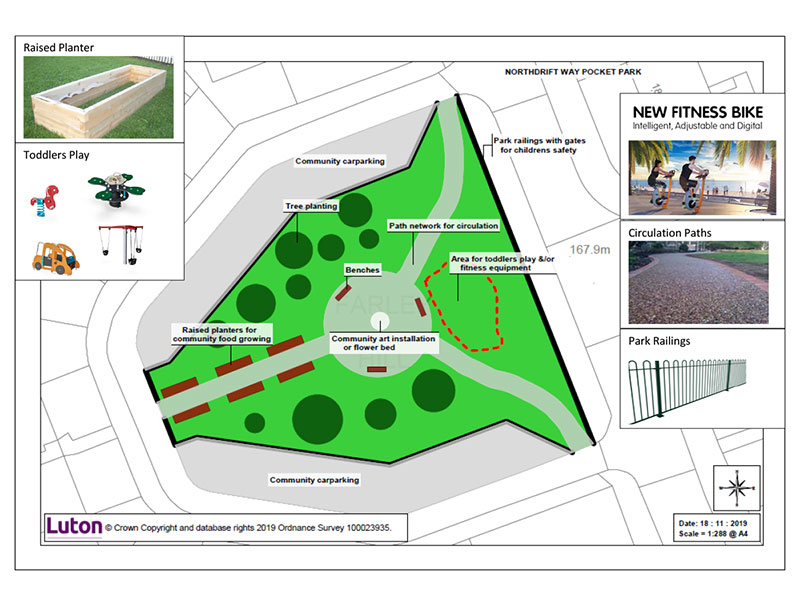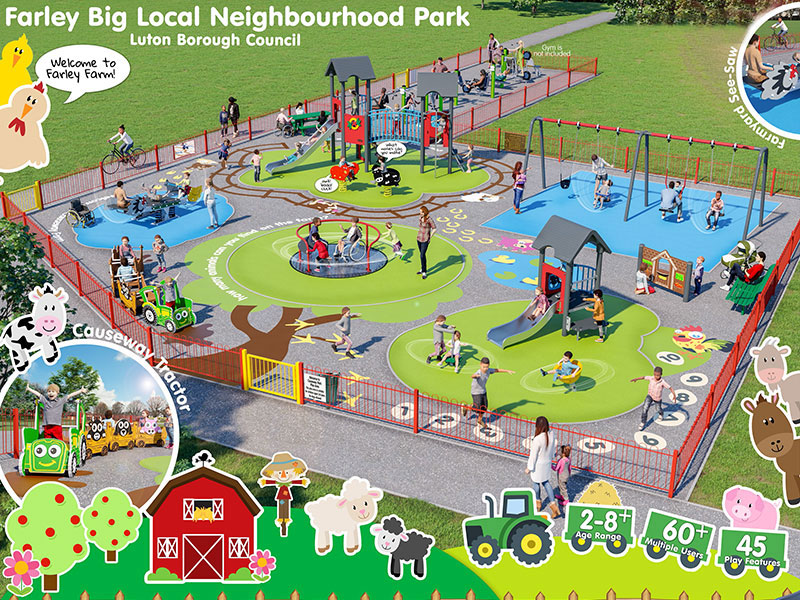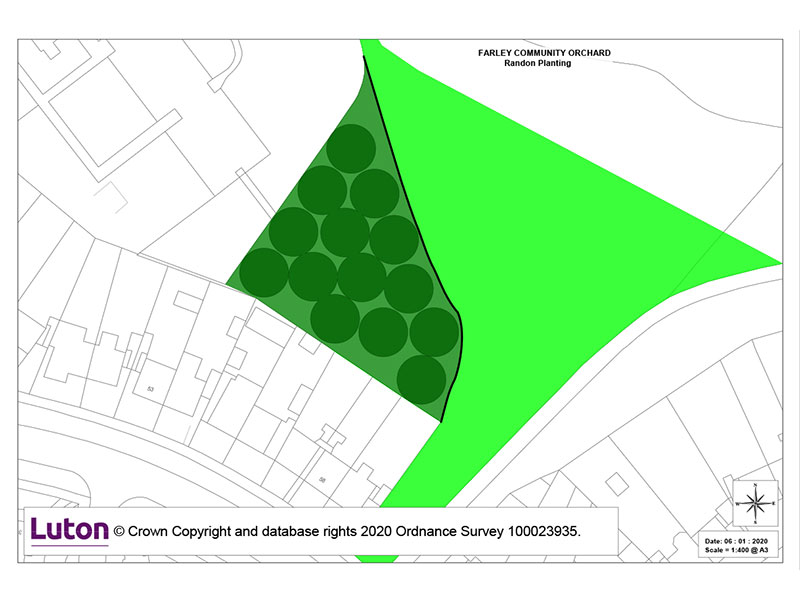
Green & Open Spaces
– Some ideas for Farley Hill
The Green & Open spaces sub group (local residents) have worked on some fantastic ideas for Legacy projects all around Farley Hill. The LBC have been great in finding some locations around Farley hill for the residents to delivery these projects on. There are a total of 5 projects for Green & Open spaces in Farley Hill, these include:
- Farley Forest Garden – Down the green strip of Whipperley Way
- Pocket Park 1 – On the small green space of Northdrift Way
- Pocket Park 2 – On the small green space of Hagdell Road
- FBL Neighbourhood Park – At Stockwood Park, facing down Whipperley Way
- Community Orchard – On the green field behind Felmersham Court / Road
The Partnership have agreed to set up a Community Orchard, at the end of 2020 when the growing season is back. Please e-mail us if you would like to get involved.
The other 4 projects are still part of the wider consultation which closes on the 28th February.
Please find some more information about the above projects below.
What is a Forest Garden?
- A Forest Garden is a low-maintenance, sustainable, plant-based or even food production and agroforestry system based on woodland / greenery and outdoor spaces.
- You can incorporate fruit and nut trees, shrubs, herbs, vines and perennial vegetables which have yields directly useful to residents.
- Making use of companion planting, can be intermixed to grow in a succession of layers to build a woodland habitat.
- Forest Gardens can have outdoor classrooms, which can be useful to schools when learning about nature.
- It can also have natural play equipment for young people.
What is a Pocket Park?
- A Pocket Park is a small park accessible to the general public.
- Pocket Parks are usually found on small pieces of land.
- Pocket Parks provide greenery a place to sit outdoors, a small toddlers playground, outdoor gym equipment alongside flower and vegetable raised beds and trees.
- Sometimes Pocket Parks are the only option for creating new public spaces without large-scale redevelopment.
- Small parks can also increase the value of nearby homes.
- Most importantly it’s a way of bringing the community together, i.e. through community gardening, children’s play etc.
What is a Neighbourhood Park & what are the Benefits?
- A Neighbourhood Park is specifically designed to enable children to play there.
- Parks are typically situated outdoors.
- There are opportunities for social skill development in turn taking and waiting for pieces of equipment (e.g. slide), collaborative play when they share equipment (e.g. see-saw), parallel play alongside another child (e.g. in the sandpit) and imaginative play such as shopping, pirates, princess, fishing, camping, etc.
- Children can use the large muscles of their body to develop gross motor skills in stepping, climbing, crawling, swinging, pulling, pushing, hanging and jumping.
- Children learn about faster, slower, up, down, around, under, over, backwards, forwards and a range of other language and concepts. They can practise their expressive communication skills with their friends as they negotiate turn taking or imaginative play sequences.
- A park can be full of sensory experiences from visual information (e.g. playground, people, nature), smells (e.g. flowers, grass, food) and sounds to process (e.g. sound board, children’s squeals). There are also opportunities for tactile ‘touch’ of natural textures (e.g. bark on trees, grass, sand, dirt, mud, pebbles, water).
- Free play at the park also provides children with opportunities for “risk taking” (e.g. how far can I reach, how high can I climb, can I do that with one hand, or do I need two?). It also provides opportunities for children to make decisions and solve problems. This in turn can build self-esteem and confidence in children, etc.
Download our Neighbourhood Park Plan – Option 1 »
Download our Neighbourhood Park Plan – Option 2 »
What is a Community Orchard?
- Community Orchards help to promote community production and ownership of their very own grown fruit/ nut trees and help rediscover the pleasures of eating organic fruit grown close to home.
- Community orchards also cool the urban environment, take up access rainfall and create habitats for wildlife, increasing the towns biodiversity.
- In an era of climate crisis, planting trees help provide a large yield year after year for decades to come is a logical move, helping to build food security and community resilience.
- It also brings the community together and teaches great skills on growing your own.

